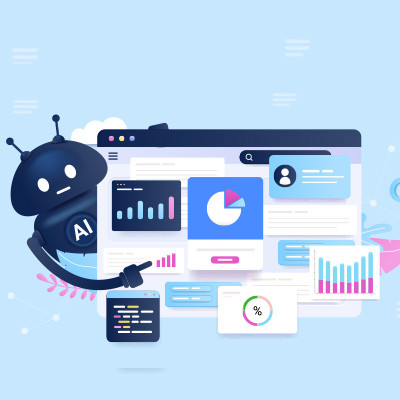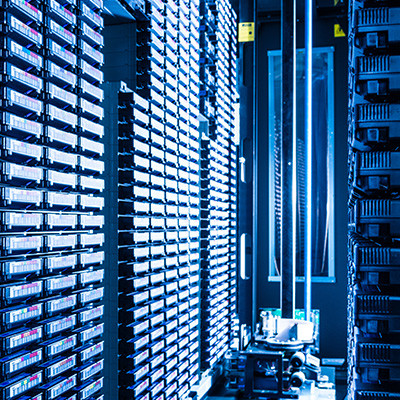-
Contact Us At
-
E-Mail Us @
-
Need Help Now?
Clearmind Technology, Inc. Blog
It seems that almost everyone owns a smartphone these days, and with smartphones come a multitude of apps. Mobile applications are the driving force behind the world's largest computing ecosystems. Consequently, the question arises, "Is it necessary for my business to have a mobile app?" Whether this is a wise decision depends on your unique business objectives, target audience, and available resources. Let’s explore the advantages and disadvantages of developing a mobile app for your business.
Across the board, modern businesses rely on no small amount of technology to support their operations, making it key that you, one, have the technology your operations require, and two, have the means to keep this technology operational. Fortunately, managed services help you by providing both. Let’s review what managed services are, and how they work.
Tape backup has been used for a long time, and it was once the most prominent solution for data backup out there. Nowadays, it’s not used much at all, mostly in favor of better and more convenient solutions. However, there has been a slight resurgence in tape backup, so we want to look at why some companies might still use it, despite its flaws.
Businesses create and need to handle more data than ever before. In the past, this would mean that there would be a lot of wasted data. Today’s document management system can completely revolutionize your business. Let’s take a look at the steps that go into creating a comprehensive digital document management system.
Your customers expect not to be inconvenienced when doing business with your organization. Small businesses can use new technology to meet these expectations by offering online ordering, mobile apps, and e-commerce platforms. Such innovations not only improve the customer experience but also expand a business' reach. Let’s look at some of the ways new technology can improve your business.
Smartphones and tablets have opened up a world of opportunities for small business owners, allowing them to streamline operations, enhance customer engagement, and boost productivity. Today, we'll explore how mobile devices are a great tool for small businesses and the myriad ways they contribute to success.
Have you considered the use of augmented reality (AR) and virtual reality (VR) for your business? If so, you’re not alone—many small businesses are opting to use these technologies in new and exciting ways, particularly as it relates to engaging customers, enhancing products, and creating better training experiences. Let’s look into how your business can utilize AR and VR to its advantage.
With things like cryptocurrencies and NFTs flooding the public awareness, the term “blockchain” has been brought up more than a few times. However, this association hardly covers what the blockchain is or what it is capable of.
Let’s briefly review what the blockchain really is, and what the technology can do.
Sports franchises have changed the way they use data to help them strategize. In the past, businesses used basic scouting to find and develop talent, but with the use of advanced analytics, not only can sports franchises improve their talent bases, they can save money and build a competitive advantage over organizations that aren’t so analytically inclined.
Businesses today deal in contracts. Every agreement has a proverbial paper trail. Traditional paper-based contracts are not only time-consuming, but they also involve manual efforts and can be prone to errors. This is where eSignature tools come into play, offering numerous benefits that revolutionize the way we handle and sign documents. This week, we explore the key advantages of eSignature tools and how they can positively impact businesses of all sizes.
Technology has touched nearly everyone over the past decade or so. More is done using technology than ever before. In this week’s blog, we go beyond individual uses of technology and discuss how technology is going to be used to improve infrastructure and the delivery of services that we take for granted.
Today’s businesses are heavily reliant on technology to streamline operations and do more to enhance workforce productivity. With the multitude of technology options available, however, finding the right solutions for your business can be more difficult than it seems at first glimpse. Let’s take a look at how technology professionals can help you navigate the technology landscape and find solutions that align with your business needs.
With organizations running on technology, it is important that it is reliably managed. It’s also important that your organization has the technology in place that will help your team be the most productive and that will keep your data secure. The best way to accomplish this is with help from certified and knowledgeable IT technicians.
We get it: you’d expect to read the statement “AI is everywhere nowadays” as a science fiction story about the enslavement of humans by the very machines they’ve created. We aren’t quite there yet, but more and more humans are coming to rely on artificial intelligence to automate a lot of different tasks inside their businesses. Let’s take a look at what people are actually using AI for.
For the small business, technology is an issue; and reasonably so. For something that holds so much importance for an organization, there are bound to be problems attached. These problems can disrupt efficient workflows and ruin some situations. In this week’s blog, we will take a look at four things you can do to cut down on your technology troubles.
We tend to focus a lot of our time on this blog talking about the technologies that businesses can (and usually should) use as a part of their operations. However, without clients or customers coming in, there’s only so much good that these technologies can do. That’s why we wanted to briefly touch on a few technologies that can help you attract more people to your business so that all the other IT solutions we recommend can live up to their potential.
The use of technology is one of the things that brings most people together. For the past couple of decades people have depended more and more on technology as a way to manage their lives, socialize, and get the goods and services they choose to purchase. This has led to the development of a lot of solid technology-related television shows. In this week’s blog, we thought we would take a look at three shows that cover multiple genres that are solid viewing for the technology enthusiast.




















